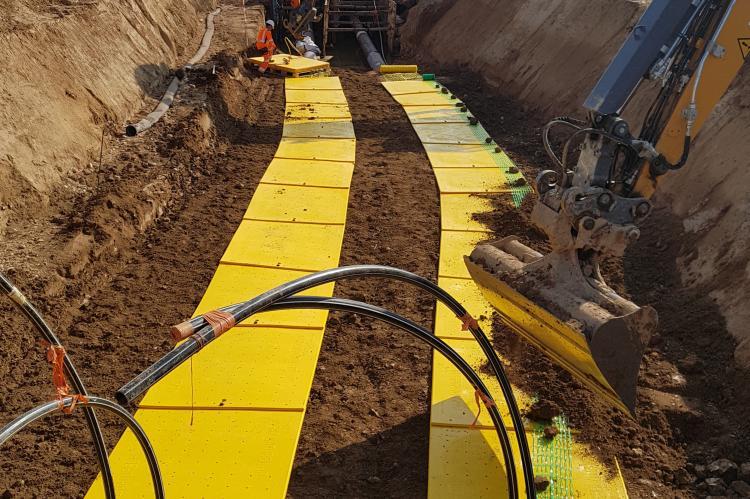An Increasing Concern: Third Party Interference Damage On Buried Pipelines.

Encroachments on buried HP Gas pipelines represent 50% of accidents on pipelines world-wide. The consequences for pipeline owners can be critical, resulting in fatalities and injuries, but also economic cost: shutdown of refineries, damage to the environment, increased compliance etc. This is a huge issue for both types of pipelines:
• Older existing pipelines because of a change in class location and therefore need of compensatory measures.
• New projects, as it is not always possible to install them far from built up areas.
1. THE POSSIBLE SOLUTIONS Solutions differ depending on the type of pipe:
• To protect existing lines, the only reliable solution for years was reinforced concrete slabs installed above the existing pipelines.
• For new projects, extra depth, thicker walls, detours of the pipeline, visible warning, may be used and even combined following the QRA results. Cost and maintenance needs will be key factors.
2. A CASE STUDY OF A CATASTROPHIC ACCIDENT IN EUROPE & THE CONSEQUENCES
• In 2009 the French Government, in response to an earlier 3rd party strike accident, required pipeline owners to conduct QRA on all their existing lines and t o retro fit protection of several hundred kil ometers of hazardous sections
• How the idea to use HDPE plates was formulated and validated
• HDPE versus concrete
• Issues with HDPE plates: slippery surface, continuity of the protection, consequences for CP testing
• Applications: when on existing lines and when on new projects?
• The risk reduction factor: the French example.
• Brief summary and reflection on HDPE plate use.
